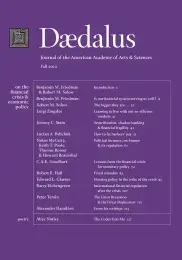Political fortunes: on finance & its regulation
The financial crisis of 2008, as well as many earlier crises, had an important political dimension.1 Government not only failed to intervene to restrain a bubble but also directly abetted the expansion of the bubble. After the bubble popped, political considerations limited and delayed appropriate policy changes.
Both during and after bubbles, political outcomes reflect the same forces that operate in normal times. Such forces include decision-making based on ideologies: free market conservatism, egalitarianism, and populism. Political decisions (and non-decisions) also reflect checks and balances across branches of the federal government and across layers of government in a federal system, as well as institutional checks, such as bicameralism and filibusters. Interests favoring current arrangements benefit from the status quo bias inherent in our political institutions. How these forces operate is greatly influenced by how ideology has contributed to polarization between the two major political parties.
These forces are part of the normal flow of politics in our democracy. Politicians respond to the politically active– campaign contributors and lobbyists in particular. Policy is swayed by the self-interest of financial firms and, more broadly, creditors and debtors. So-called independent regulators, including the Federal Reserve, respond not only to their own ideology and expertise but also to elected officials with political power over them.
The crisis of 2008 followed the latest in a long history of real estate bubbles in the United States. Bubbles often spill over into other sectors, so that a pop in an asset bubble frequently engenders a banking crisis.
Before 2008, the most recent example of a real estate bubble’s devastating effect on financial institutions was the savings and loan (S&L) crisis of the 1980s. This earlier crisis differed in important respects from the 2008 crisis. First, the political system was substantially less polarized than it is today. Second, the economic shock was much smaller. These two factors contributed to a less contentious eventual resolution of the crisis. Moreover, the crash in real estate prices at that time was much more geographically concentrated than in the 2000s, and the thrifts (as the firms in the S&L industry were called) were more Main Street than Wall Street. Nonetheless, the interaction between the financial and the political sectors strongly foreshadowed the events of 2008.2
. . .
